|
Me Sahyadri |
|
Monsoon Transformation and Man made Transformation |
|
July 2015 |
|
Volume 2, number 7 |
Please use minimum 1280 pixel horizontal screen
resolution for viewing. Please be patient while all the images in
webpage are loaded. Please do not use the images for any commercial
use without permission. Text in Marathi and English is not exact
translation. There are some transformation two-image slideshows in this presentation. Please give sufficient time to allow these slide shows to load. Special thanks to Mr. Balasaheb Yelwande for very good assistance while making images on transformation, and to all those who helped me during the compilation and field work for the help and guidance. The credit of my weather science learning goes to Rajesh Kapadia sir from vagaries.in Without the weather learnings, none of the photograph would have been possible. |
|
|
|
|
|
|
सह्याद्री (पश्चिम घाट) हा एक नैसर्गिक संपदेचा, वैविध्यतेचा, भौगोलिक व ऐतिहासिक ठेवा आहे. वाढत्या मानवी अतिक्रमणाचा, सह्याद्रीच्या विविध घटकांवर होणारा दुष्परिणाम भविष्यात आपल्यालाच धोका निर्माण करेल, यात शंका नाही. शुद्ध पाणी, हवा व उर्जा, भावी पिढीला मिळण्यासाठी, नंद्यांचे उगम असलेला सह्याद्री व त्याभागातील जंगले टिकवणे महत्वाचे आहे. सह्याद्रीच्या महत्वाच्या घटकांचे महत्व छायाचित्रांद्वारे प्रकट करण्याचा मी येथे प्रयत्न केला आहे. येथील पक्षी, प्राणी, वनस्पती, अधिवास, किल्ले व लेणी अशा विविध विषयांबद्दल आपण समजुन घेऊ.
|
|
Western ghats, or Sahyadri as we all call it as, is a treasure trove of spectacular landscapes, biodiversity, flora, fauna, some amazing geological wonders and manmade monuments. With the increasing pressure from human encroachment, all these elements are under stress and in turn are under depletion. Western ghats should be left untouched by human beings, to protect their future generations from getting short of resources, such as water, energy and clean air. The important elements of western ghats, which need protection are highlighted in the new version of Photo journal , Me Sahyadri Magazine. The various issues of journal have a brief of inspiring subjects such as birds, mammals, forts, ancient caves, snakes and the ambiance.
|
|
|
| |
 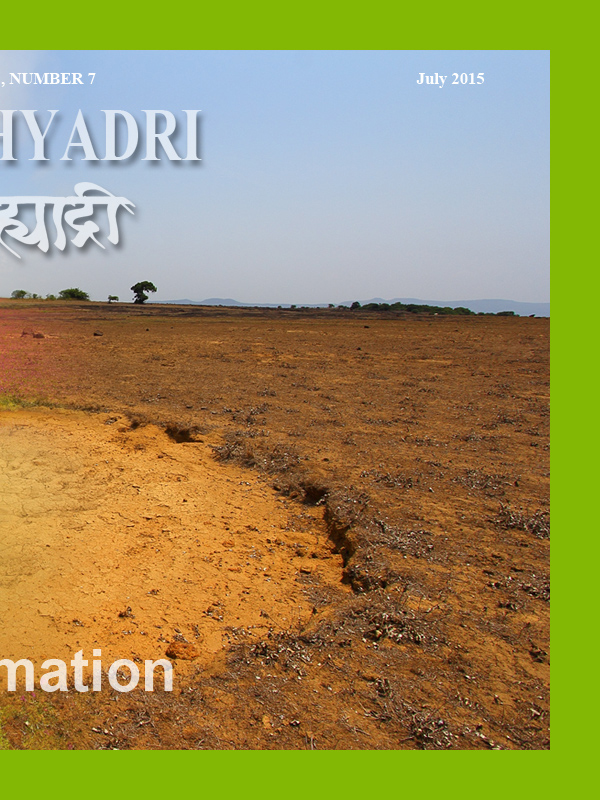
|
| |
| Me Sahyadri – July 2015 - Transformer Monsoon
|
| |
|
|
सह्याद्रीच्या डोंगररांगेत, सातारा जिल्ह्याच्या दक्षिणेकडे, सपाट माथा असलेले डोंगर दिसतात. या डोंगरांच्या माथ्यावर सड़्याचे पठार आहेत. सच्छिद्र जांभा अग्निजन्य दगड येथे पहावयास मिळतो. दुरुन पाहिल्यास हे डोंगरमाथे कृत्रिमरित्या सपाट केल्यासारखे वाटतात, मात्र ते नैसर्गिकरित्या सपाट आहेत. रायरेश्वर, कास, पाचगणी, कमळगड इत्यादी ठिकाणी असे सड़्याचे डोंगर आहेत. पावसाळ्यात कास ला भरपुर पाऊस पडतो. (२००० ते २५०० मिलीमीटर). जांभा दगड सछिद्र असल्याने येथे पावसाच्या पाण्याचा निचरा होतो. पठाराच्या काही भागात असलेल्या पातळ मातीच्या थरावर लहान व सुक्ष्म वनस्पती वाढतात. येथे बऱ्याच वनस्पती दुर्मिळ, कमी जीवनसत्वावर जगणाऱ्या आहेत. या वनस्पतींचे रहाणीमान इतरत्र आढळणाया वनस्पतींपेक्षा विलक्षण वेगळे व दुर्मिळ आहे. अशा विविध वनस्पतींचा व किटकांचा येथे आगळावेगळा समाज तयार झाला आहे. उन्हाळ्यात रुक्ष दिसणाऱ्या पण पावसाळ्यात बहरणाऱ्या या अदभुत सृष्टीला जपणे हे आपले कर्तव्य आहे.
|
|
Western Ghats south of Maharashtra have many flat table top mountains, with lateritic plateaus at the top. When viewed from distance the hills look so flat as if they were done so artificially. Lateritic plateau of Kaas is one of such many plateaus in the region. The volcanic rock at the top has been eroded over the years due to heavy rains of monsoon. The soft portions of the rock are eroded leaving behind the porous rock with hard elements. The thin layer of sandy soil over such rock does not have much nutrition. Due to this reason, at Kaas, the soil has many unique wildflower plants, herbs blooming in Monsoon, some of them being insectivorous plants. Though many herbs are very tiny, this plateau and the region around get dramatically transformed in the monsoon and in post monsoon season. The area is very scenic with beautiful vistas, and requires special protection for its flora, fauna and landscapes.
|
|
|
| |
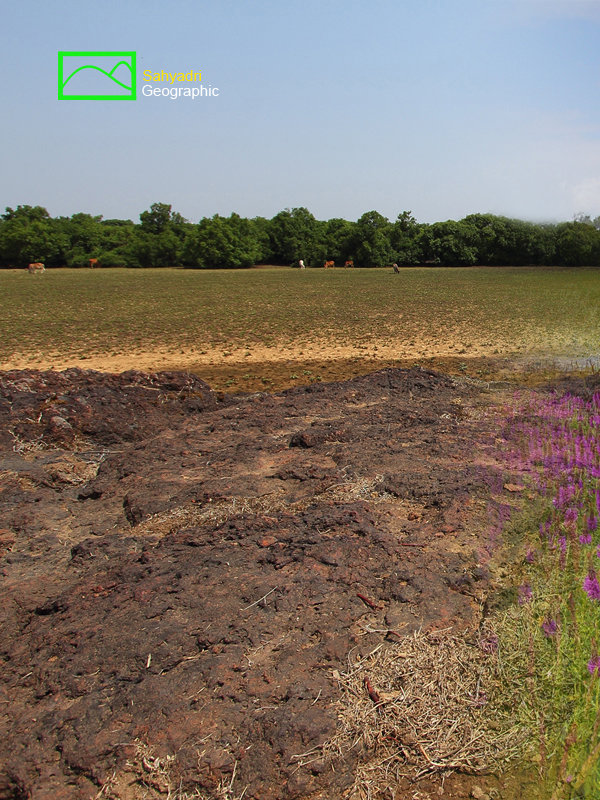 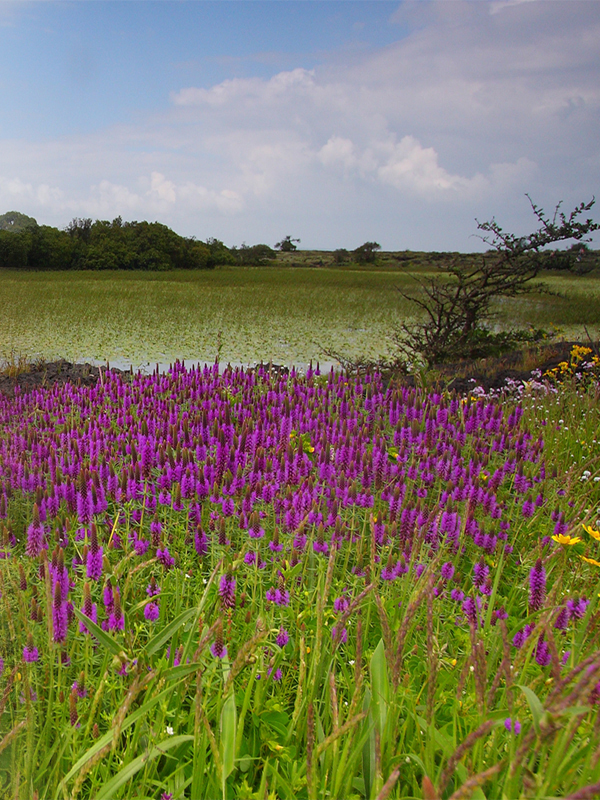
|
| |
| Nature Transformation by monsoon, lateritic plateau, western ghats, Maharashtra, India
|
| |
|
|
| |

|
| |
| Nature Transformation by monsoon, laterite plateau, western ghats, Maharashtra, India
|
| |
|
|
| |
 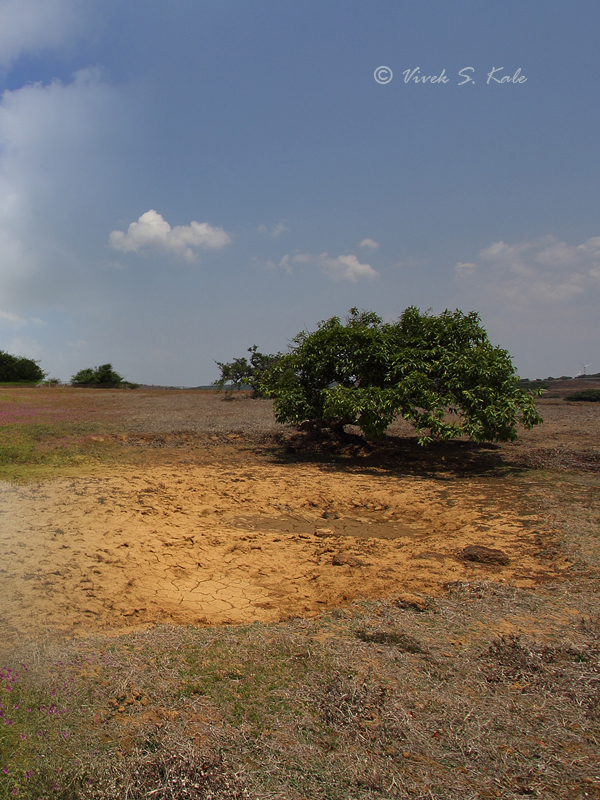
|
| |
| Nature Transformation by monsoon, lateritic plateau, western ghats, Maharashtra, India
|
| |
|
|
| |
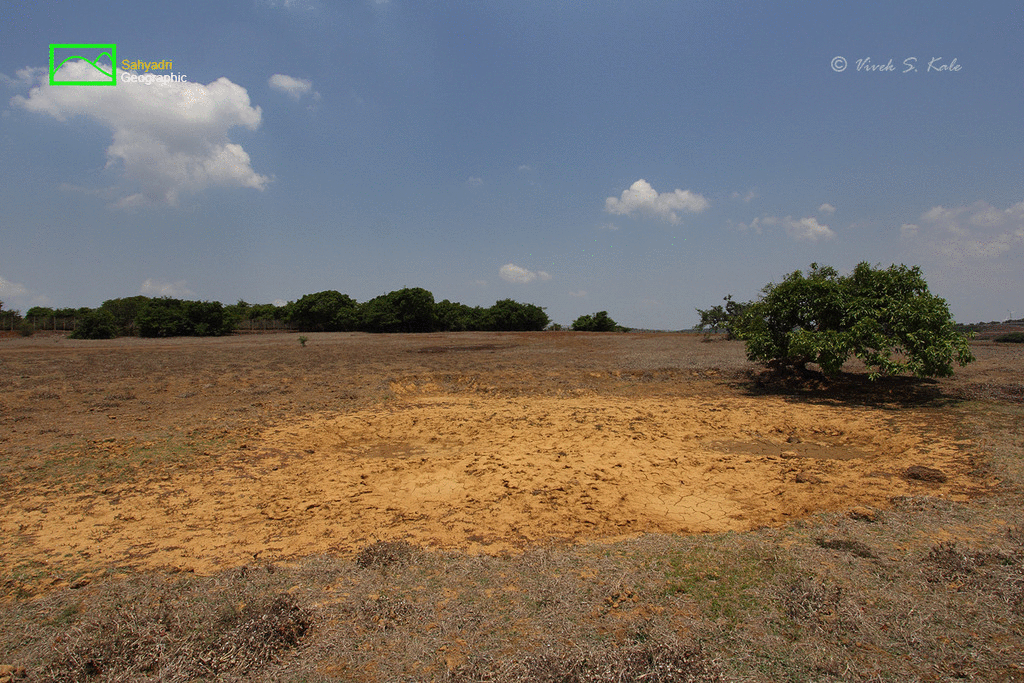
|
| |
| Nature Transformation by monsoon, lateritic plateau, western ghats, Maharashtra, India
|
| |
|
|
उन्हाळ्यात कास पठारावर रुक्ष परिस्थिती असते. माळावर पिवळे गवत व वनस्पती दिसतात. तुरळक सदाहरित झाडे सोडल्यास सर्व पठार उजाड दिसते. पावसाळ्यात बहरणाऱ्या वनस्पतींचे बीज, कंद उन्हाळ्यात सुप्तावस्थेत असतात. क्वचित पडणाऱ्या वळवाच्या पावसामुळे लहान डबकी तयार झालेली दिसतात. उन्हाळा संपता संपता येथे वातावरणात बदल होतो. आद्रता वाढते, रात्री धुक्याचे लोट पठारावर पसरतात. वारा सुटतो, पावसाचे आगमन जुन महिन्यात झाल्यावर पठार आपले रुप पालटु लागते. पठार उंचावर असल्याने येथे पावसाळ्यात पावसाचे, वाऱ्याचे, व धुक्याचे राज्य असते. पावसाळ्यात जुन ते ऑगस्ट या काळात, पठारावर धुके असते. सुर्यास्तानंतर कोकणातुन घाटमाथ्यावर उसळणाऱ्या धुक्याला कास पठाराकडे वाट मिळते. सकाळी दहा ते अकरा वाजेपर्यंत हे धुके घाटमाथ्यावर व जवळच्या घाटपठारावर पसरते. पुर्वेकडे कमी दाबाचा पट्टा तयार झाल्यास पठारावर पावसाचा जोर वाढतो. त्याबरोबर आद्रता वाढते.
|
|
In the scotching heat of summer if one visits the plateau, one finds barren look with dried herbs all around. The evergreen tree species make a vivid contrast against the outlook of the yellow tanned lateritic plateau. Most of the herbs which become full of life in Monsoon are in dormant state. Their root bulbs in the soil hold the hope for their revival in monsoon. As the summer ends, few heavy showers of pre-monsoon fill the puddles and small water-bodies on the plateau. The revival of life starts in early May with these showers. The wind picks up in June with arrival of monsoon riding the wind. As the plateau is at the top of the hill with wide region open on either sides, the wind velocity here is very high with low clouds approaching the plateau from south.
|
|
|
| |
 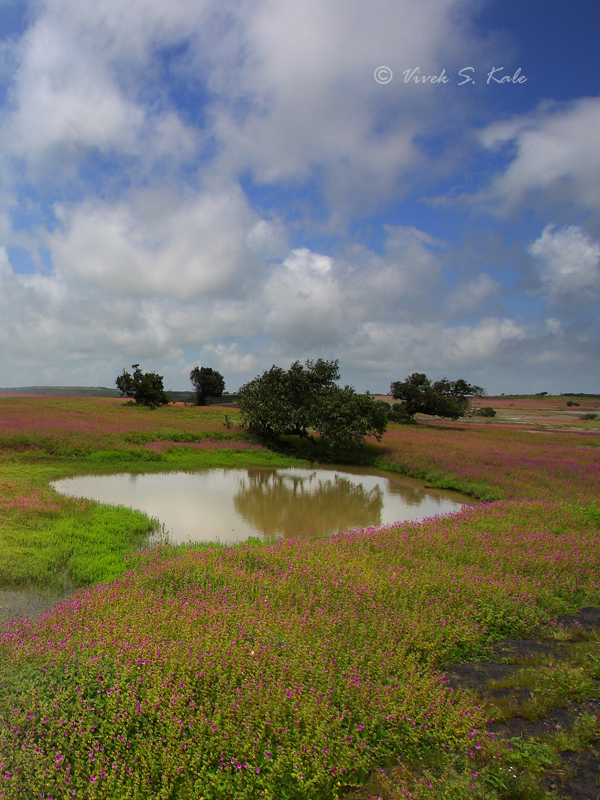
|
| |
| Nature Transformation by monsoon, lateritic plateau, western ghats, Maharashtra, India
|
| |
|
|
| |
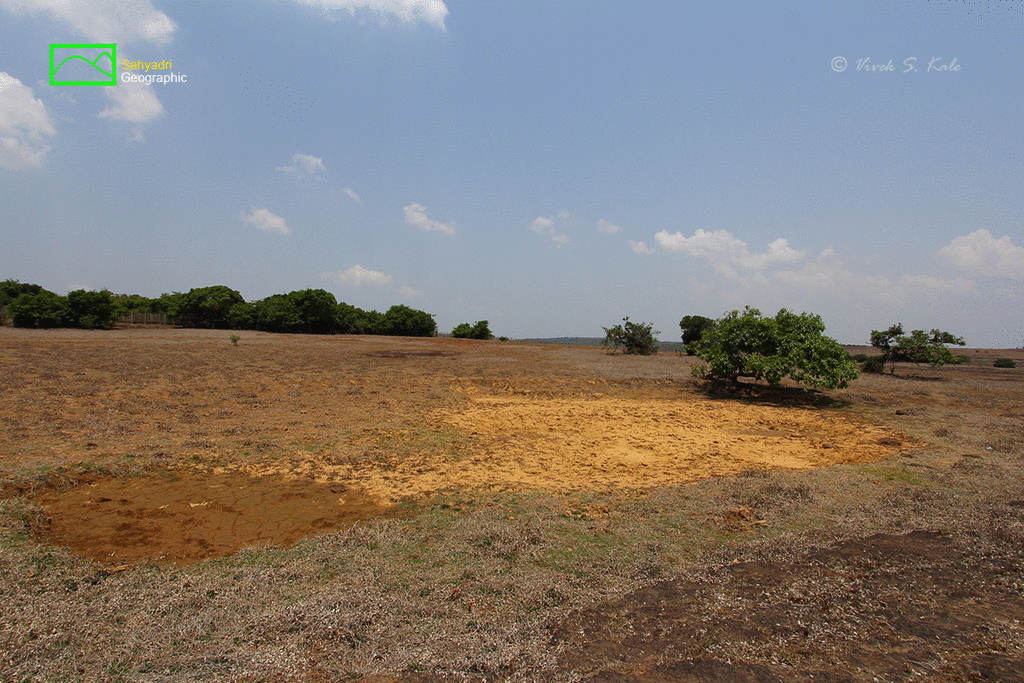
|
| |
| Nature Transformation by monsoon, lateritic plateau, western ghats, Maharashtra, India
|
| |
|
|
| |
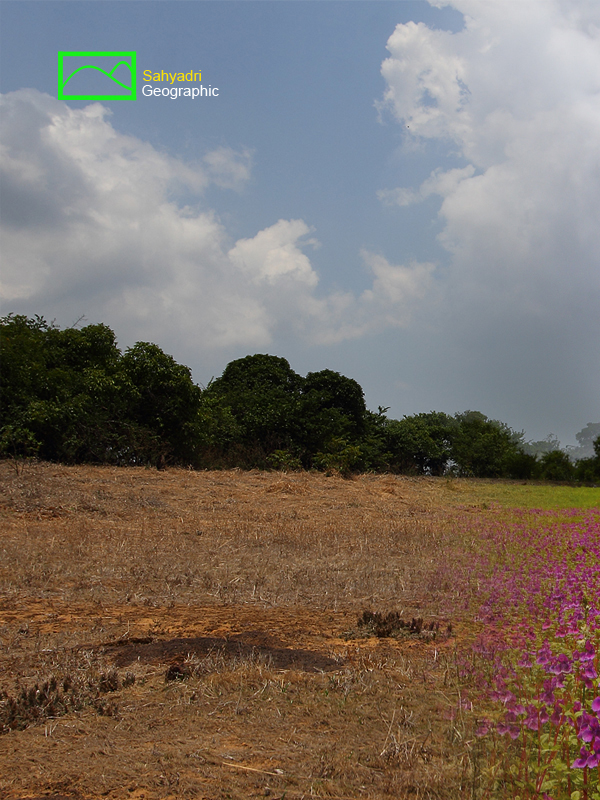 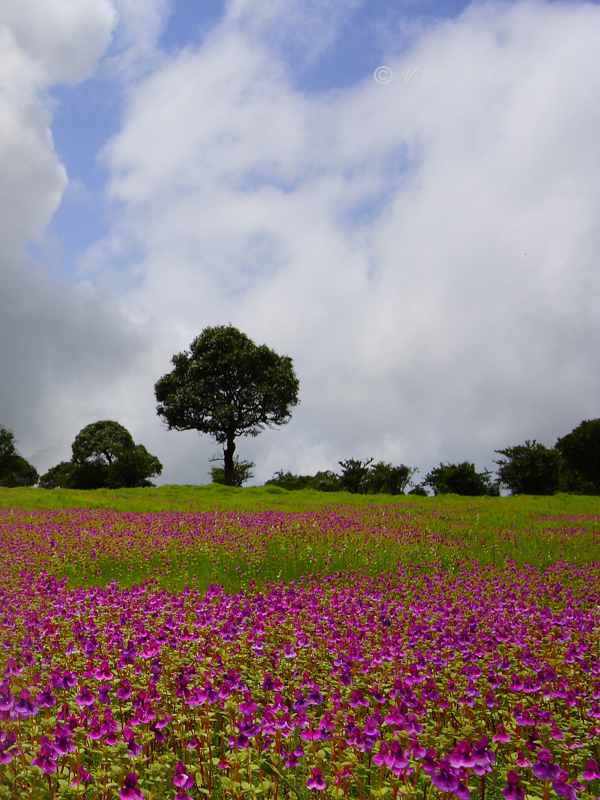
|
| |
| Nature Transformation by monsoon, lateritic plateau, western ghats, Maharashtra, India
|
| |
|
|
| |
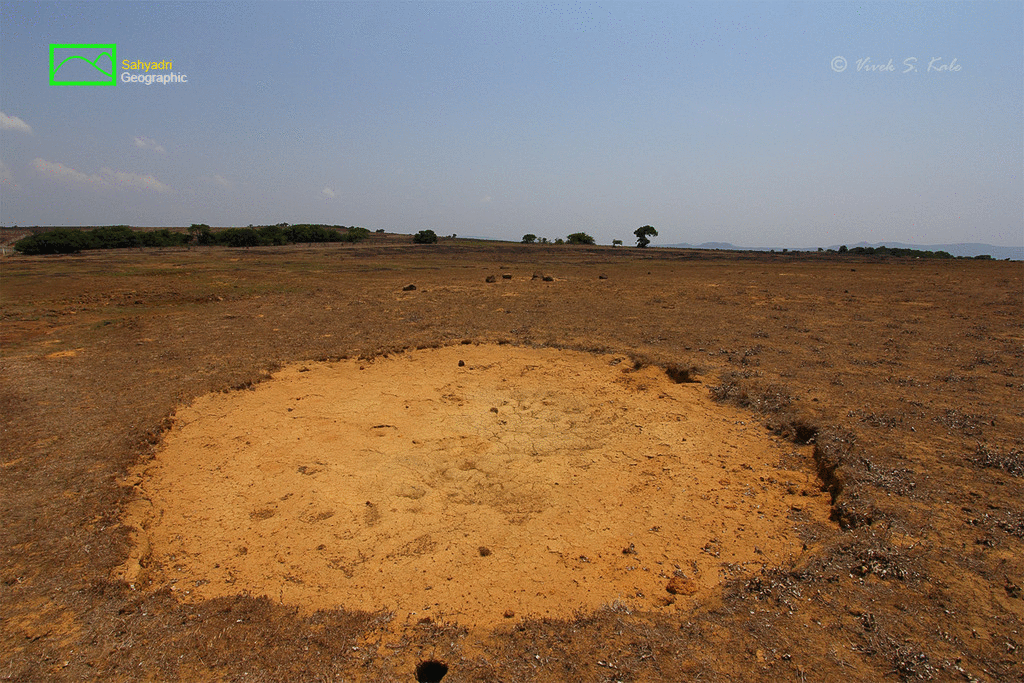
|
| |
| Nature Transformation by monsoon, lateritic plateau, western ghats, Maharashtra, India
|
| |
|
|
पावसाळ्यात उगवलेल्या वनस्पतींना पावसाळ्यात व काही वनस्पतींना पावसाळ्यानंतर फुले येतात. पठार फुलांनी बहरते. पठारावर आढळणाऱ्या वनस्पतींमध्ये वैविध्य आढळते. काही वनस्पती भरघोस प्रमाणात आढळतात. तर काही दुर्मिळ वनस्पती तुरळक आढळतात. तुरळक व स्थानिक वनस्पतींचे अस्तित्व धोक्यात आलेले आहे. कास पठारावर येणाऱ्या बहुतेक पर्यटकांना पर्यावरण शास्त्राचा बोध नसतो. या पठाराच्या व येथील वनस्पतींबद्दल त्यांना माहिती नसते. पठारावर लाल तेरडा, जांभळी मंजिरी, पाणगेंद, सीतेची आसवे, कुमुदिनी, व ७-८ वर्षांनंतर उमलणारी टोपली कारवी या सहा वनस्पतींच्या फुलांच्या ताटव्यांमुळे पर्यटक आकर्षित होतात. या व्यतिरिक्त तुरळक आढळणाऱ्या मात्र वनस्पतीशास्त्र व पर्यावरण शास्त्राच्या दृष्टीने महत्वाच्या इतर वनस्पतींची मात्र कुचंबणा होते. त्यांना तुडवले जाते. येथे येणारे सर्व पर्यटक नकळत ही चुक करतात. सर्वच वनस्पती पायदळी तुडवल्या जातात असे नाही. काही वनस्पतींची चोरी होते, काही वनस्पती प्रदुषणामुळे मारल्या जातात. एकुणच या पठारावर पर्यटनामुळे दबाव आला आहे असे बहुसंख्य जाणकरांचे मत झालेले आहे.
|
|
In Monsoon from June to August, the plateau is mostly covered with fog and has very humid, cold ambience. In the post-monsoon season, most of the species bloom with flowers. There are numerous herbs which are seen on the plateau. Some of them are very few and isolated, with few categorized as critically endangered species. Most of the herbs are not seen by common visitors as they cannot recognize such species. However the major cause of attraction of the visitors and thus the uncontrolled tourism is the blooming of species such as Impatiens lawii and Pleocaulus ritchiei which blooms there in abundance in post monsoon season. This creates the trouble for the species other than Impatiens lawii which are scientifically significant but not so aesthetically.
|
|
|
| |
 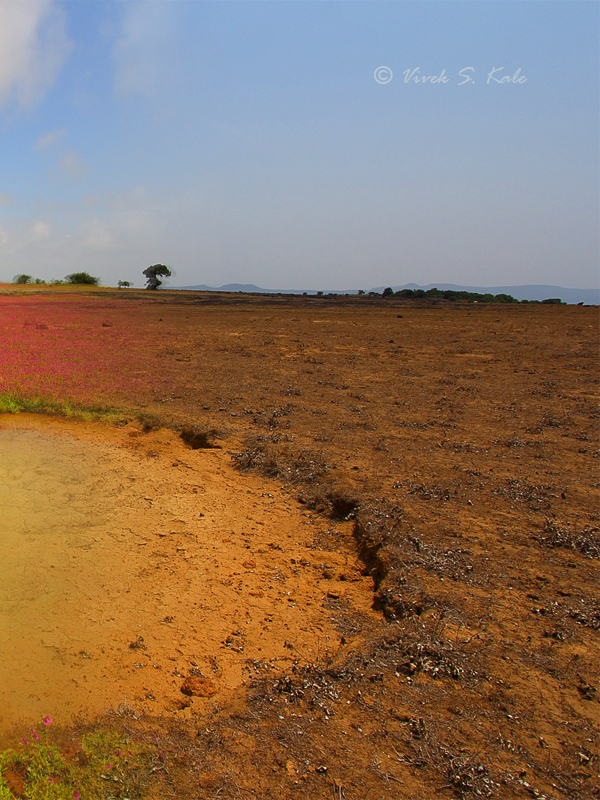
|
| |
| Nature Transformation by monsoon, lateritic plateau, western ghats, Maharashtra, India
|
| |
|
|
| |
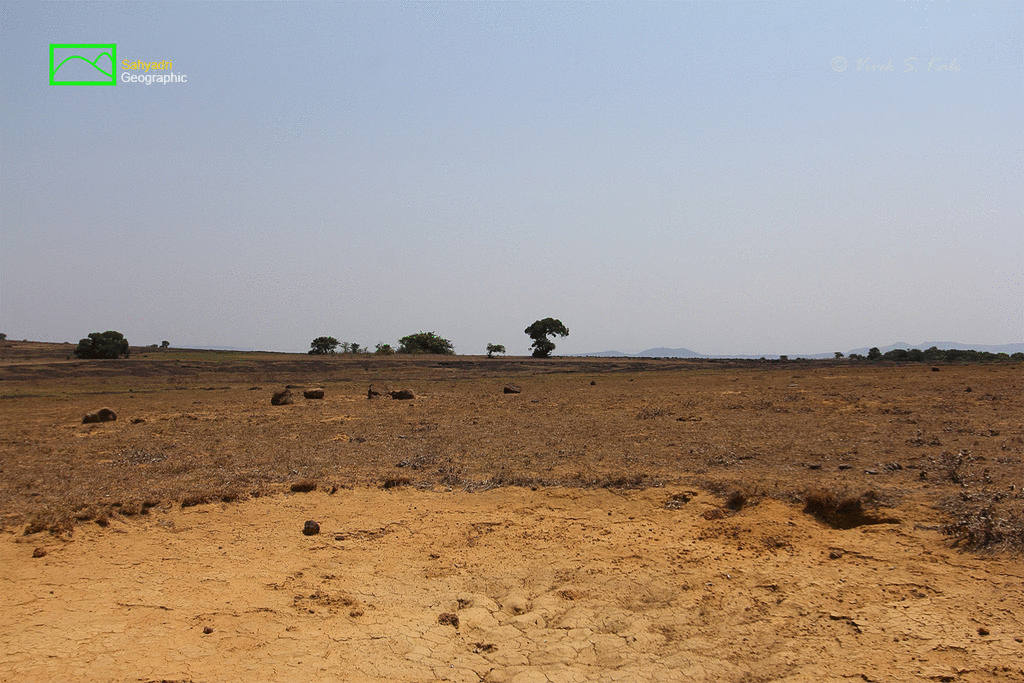
|
| |
| Nature Transformation by monsoon, lateritic plateau, western ghats, Maharashtra, India
|
| |
|
|
| |
 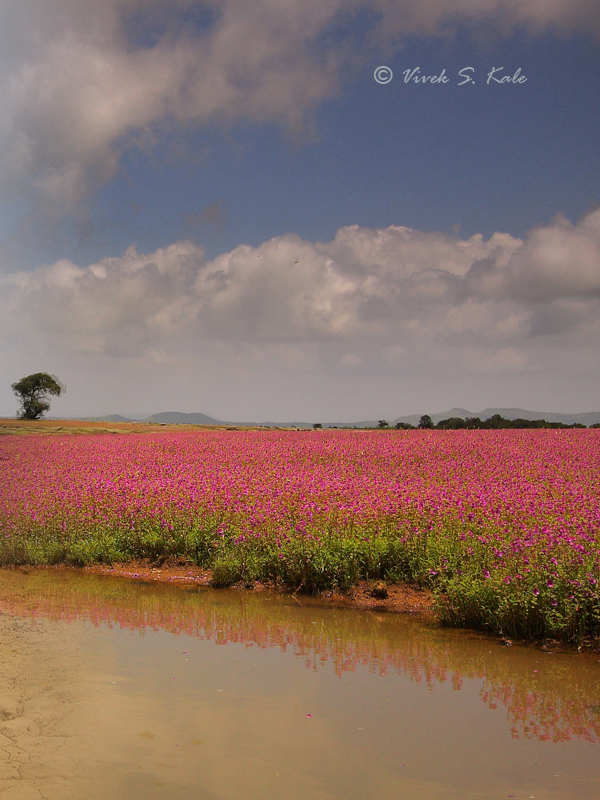
|
| |
| Nature Transformation by monsoon, lateritic plateau, western ghats, Maharashtra, India
|
| |
|
|
| |

|
| |
| Nature Transformation by monsoon, lateritic plateau, western ghats, Maharashtra, India
|
| |
|
|
जसा काळ लोटतो तसे हवामानात बदल होतात. त्यामुळे व इतर नैसर्गिक कारणामुळे होणारे बदल प्रत्येक निसर्ग परिसंस्थेत होत असतात. त्यात काही जातींचे प्राणी व वनस्पती नामशेष होतात. य़ा व्यतिरिक्त, मानवी हस्तक्षेपामुळे गेल्या काही वर्षांत निसर्गात मोठे बदल घडत आहेत. त्यातल्या त्यात नाजुक निसर्ग परिसंस्था मानवी हस्तक्षेपामुळे नामशेष होतात. कास चे पठार अशाच नाजुक निसर्ग परिसंस्थेचे एक उदाहरण आहे. येथे सुद्धा मानवी हस्तक्षेपाचा हळुहळु वाईट परिणाम येथील वनस्पतींवर होत आहे. कोणत्या कारणामुळे किती व कसा परिणाम होतो आहे हे सांगणे सखोल अभ्यासाशिवाय अवघड आहे. मात्र हस्तक्षेप नियंत्रित किंवा कमी केल्यास येथील वनस्पती समुळ नष्ट होणे टळेल असे म्हणता येऊ शकते. यावर विचार होणे महत्वाचे आहे. शास्त्रीय दृष्टिकोनाचा अभाव , पठाराच्या भोवताली असलेल्या ग्रामीण समाजाच्या सामाजिक गरजांकडे केलेल दुर्लक्ष, शासनाची अपुरी यंत्रणा, कायदा व नियमांची अर्धवट अंमलबजावणी व येथे येणाऱ्या ग्रामीण व शहरी पर्यटकांची निसर्ग टिकवण्यासाठी नसलेली आत्मीयता यामुळे कासच्या निसर्ग परिसंस्थेचे हळुहळु विघटन होते आहे.
|
|
Over the time year by year the degradation of natural habitat has been observed and noted by various botanists and visitors. This has lead to the permanent transformation to the plateau. One can call this as degradation of natural habitat. The degradation is significant if seen from eyes of someone who has visited the plateau over last few decades. This manmade transformation is the real cause of worry. The lack of scientific approach to control the survival of natural science, control of human welfare in the villages around the plateau, insufficient infrastructure of forest department and state government, and lack of civic sense of the visitors etc are few main root causes for this degradation.
|
|
|
| |
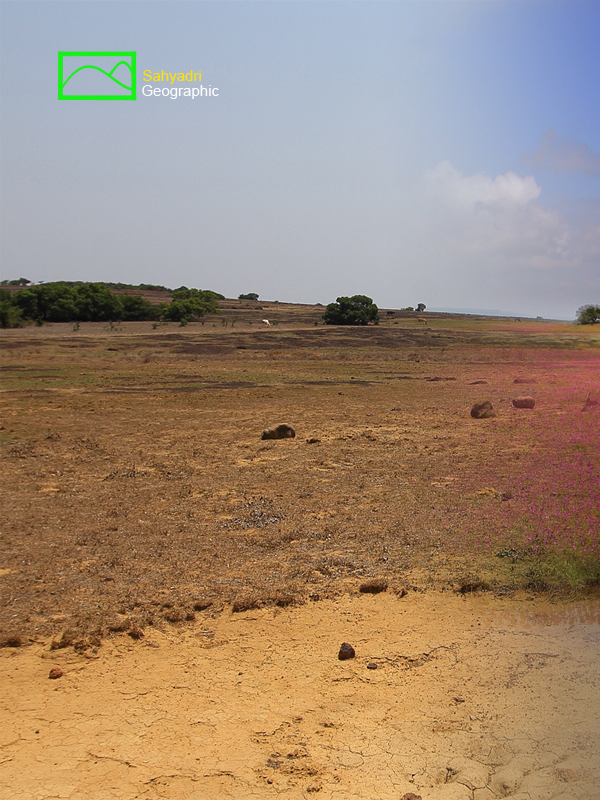 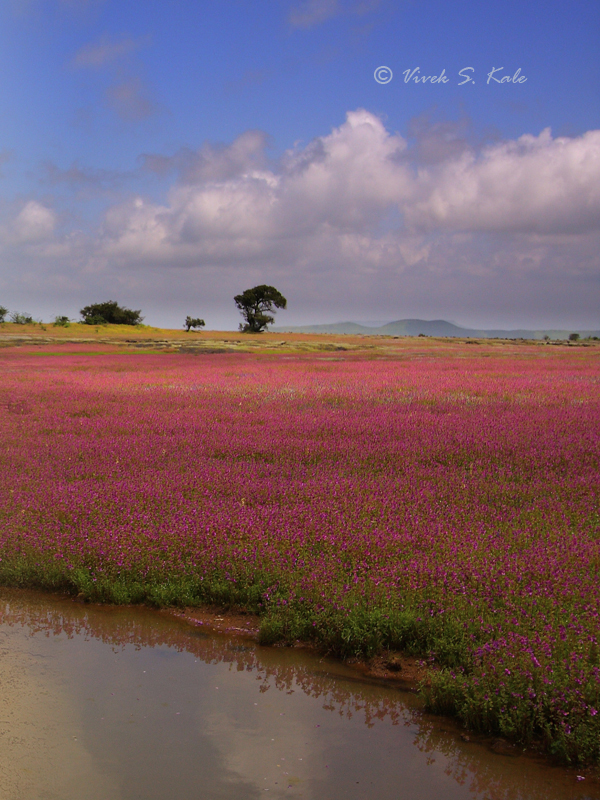
|
| |
| Nature Transformation by monsoon, lateritic plateau, western ghats, Maharashtra, India
|
| |
|
|
| |

|
| |
| Nature Transformation by monsoon, lateritic plateau, western ghats, Maharashtra, India
|
| |
|
|
| |
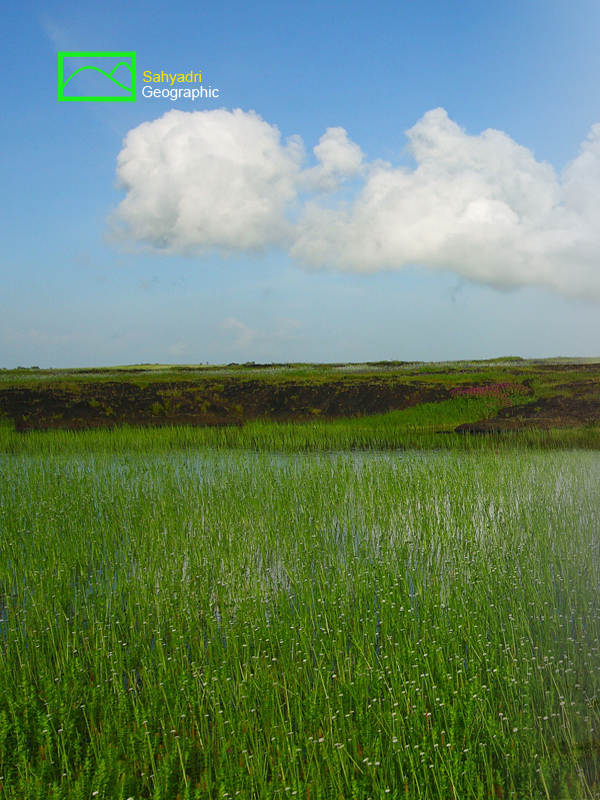 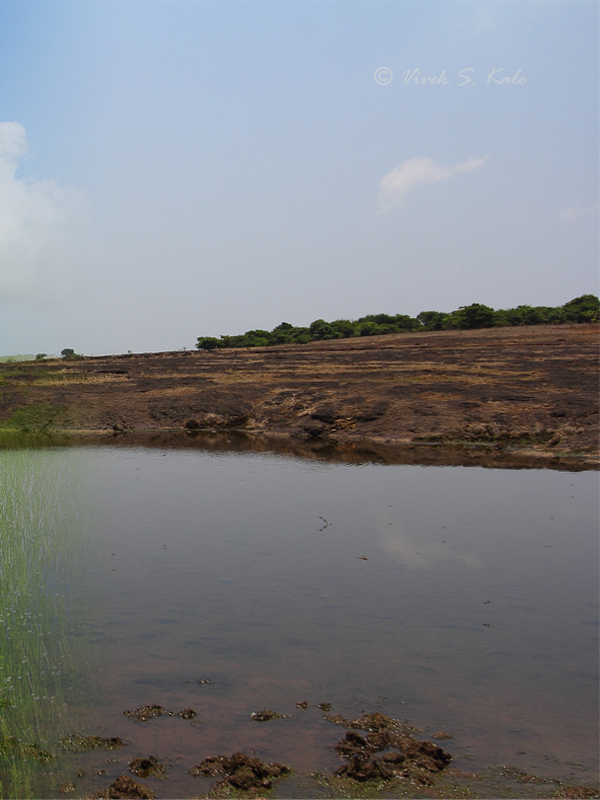
|
| |
| Nature Transformation by monsoon, lateritic plateau, western ghats, Maharashtra, India
|
| |
|
|
| |
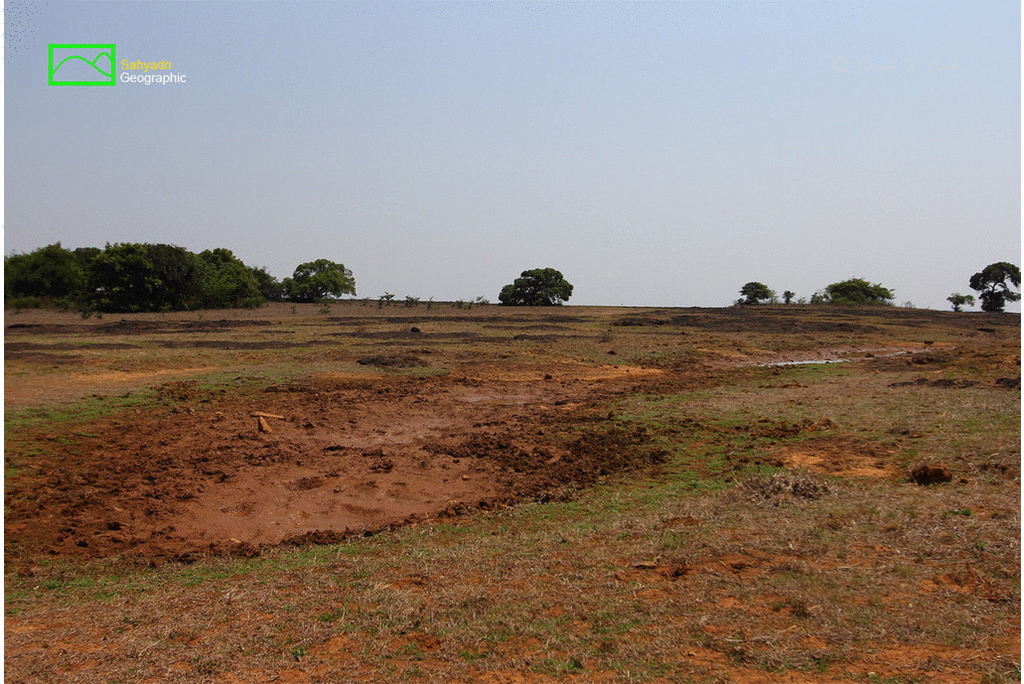
|
| |
| Nature Transformation by monsoon, lateritic plateau, western ghats, Maharashtra, India
|
| |
|
|
| |
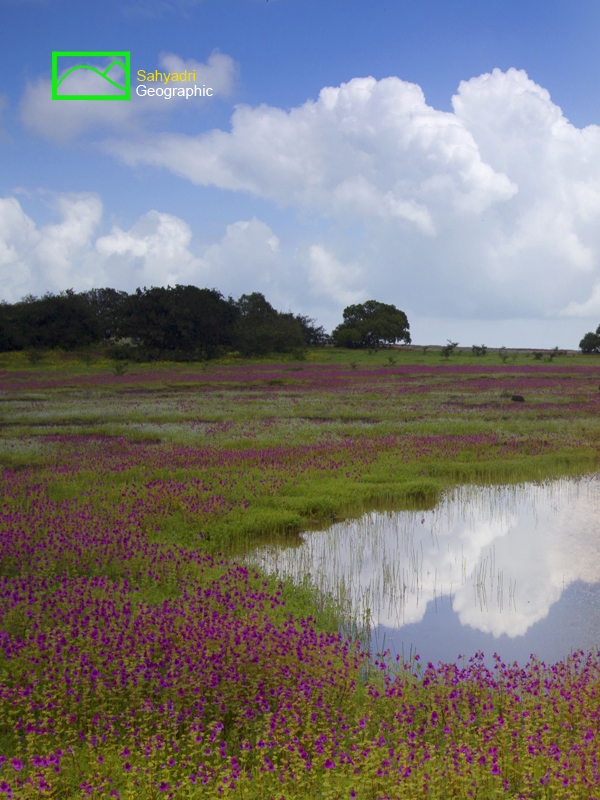 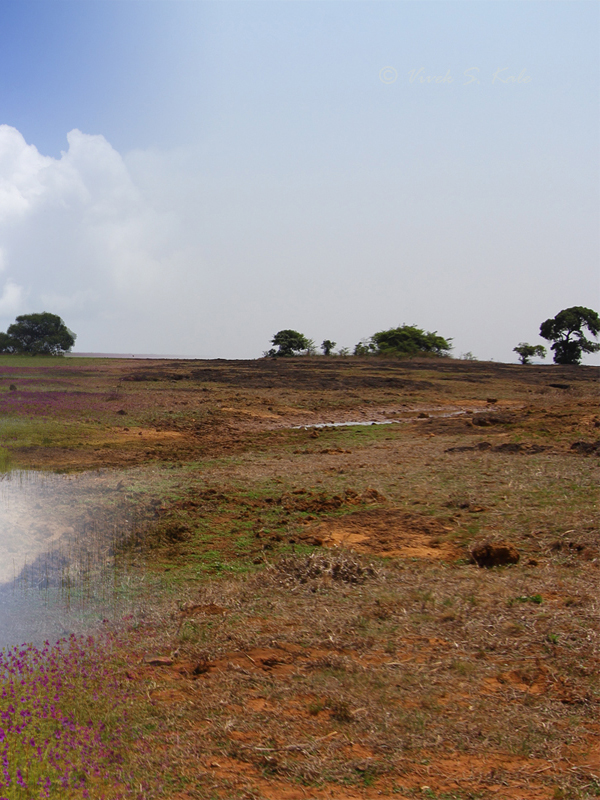
|
| |
| Nature Transformation by monsoon, lateritic plateau, western ghats, Maharashtra, India
|
| |
|
|
| |
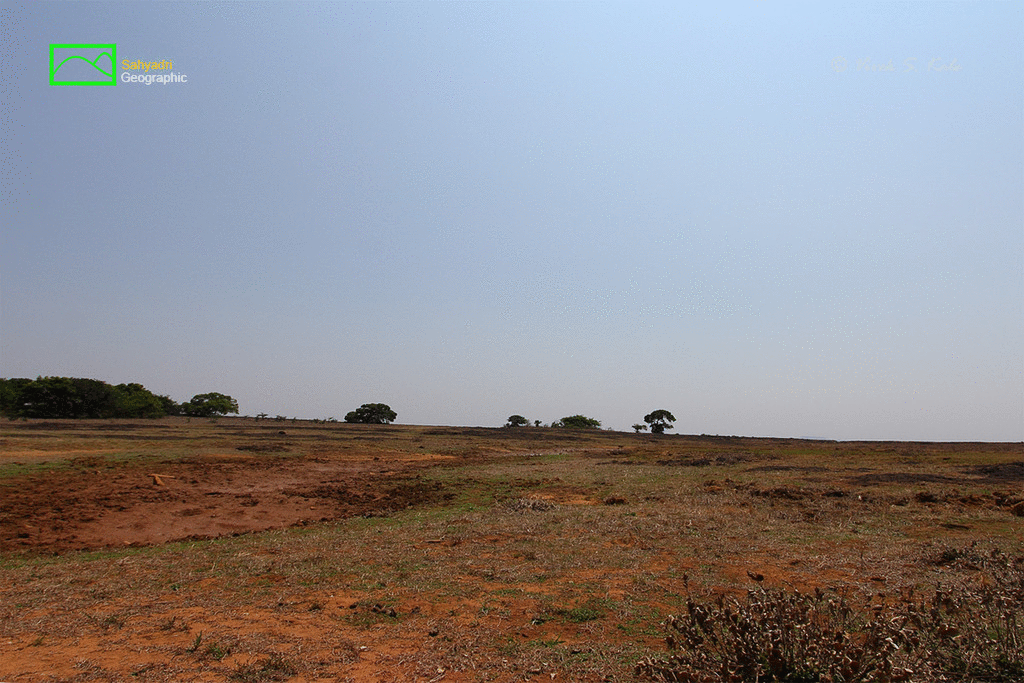
|
| |
| Nature Transformation by monsoon, lateritic plateau, western ghats, Maharashtra, India
|
| |
|
|
पर्यटकांची जबाबदारी अत्यंत महत्वाची आहे. किचकट पण महत्वाची शास्त्रीय माहिती, मुळ नागरिक जबाबदारी, निसर्गाशी मिळते जुळते घेण्याची जाणीव, निसर्गाशी समतोलाचा मानव जातीवर, व स्वत:वर होणारा परिणाम या बाबींवर पर्यटकाने विचार करणे महत्वाचे आहे. या बाबींची जाण असलेल्या संघटना व शासकिय यंत्रणा कास सारख्या निसर्ग अधिवासाच्या भविष्यासाठी काही पावले उचलताना दिसतात. मात्र हे सर्व अपुरे वाटते, नियमांची कडक अंमलबजावणी टाळली जात आहे.
|
|
When it comes to civic sense, the diffusion of scientific knowledge, basic education, ability to link the significance of other species in nature with survival of human survival, ability to link the significance of other species in nature with self individual, play key important role in effect of the plateau visitors. While the efforts on the front are initiated by both government and non government organizations, these efforts are not sufficient and will take years to see the positive results.
|
|
|
| |
 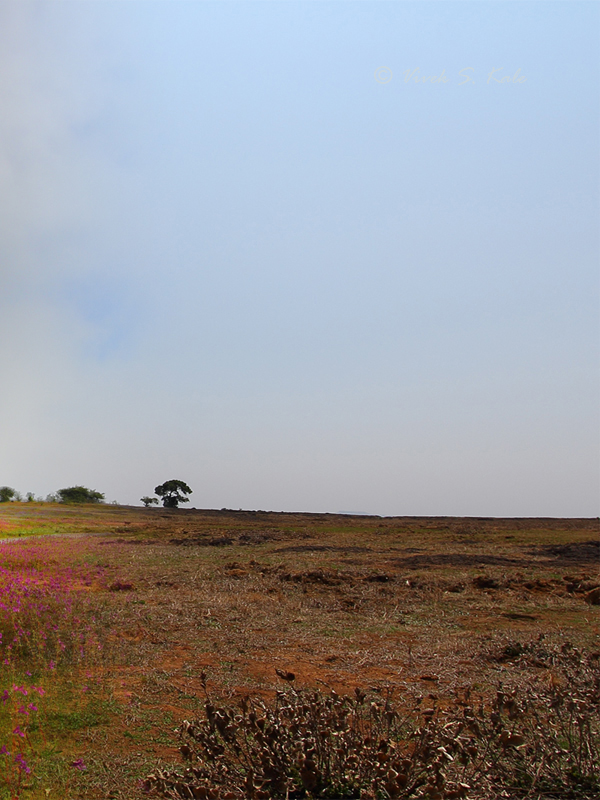
|
| |
| Monsoon transformation, lateritic plateau, western ghats, Maharashtra, India
|
| |
|
|
| |
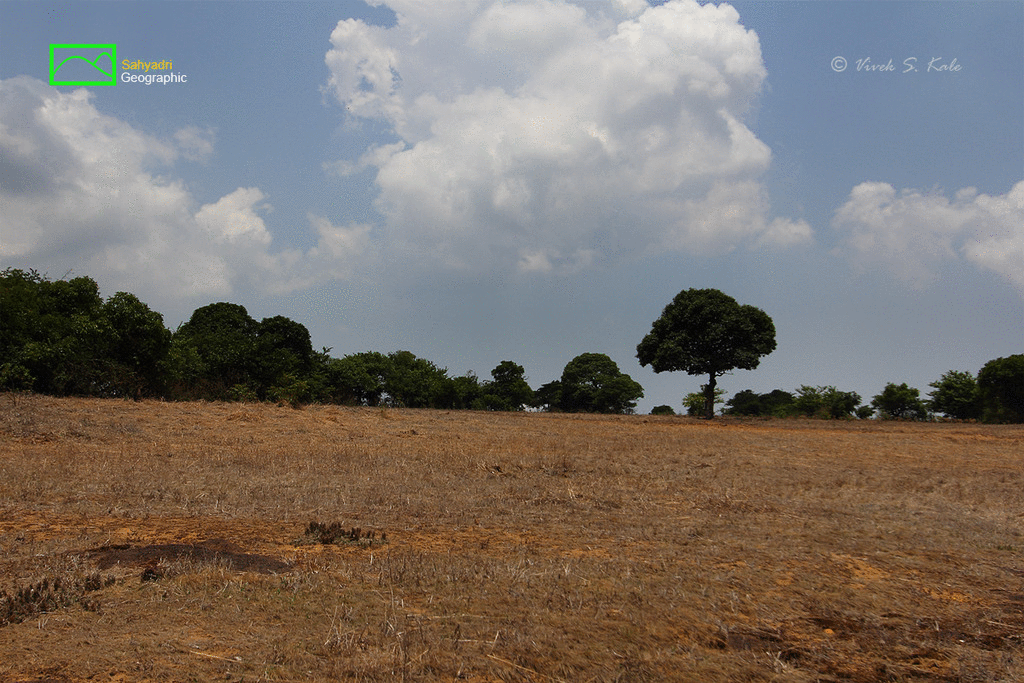
|
| |
| Nature Transformation by monsoon, lateritic plateau, western ghats, Maharashtra, India
|
| |
|
|
| |
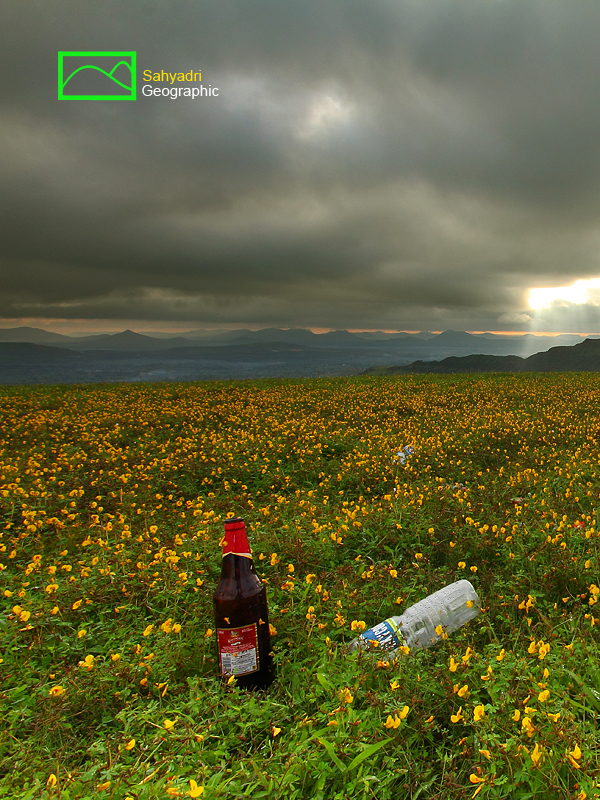 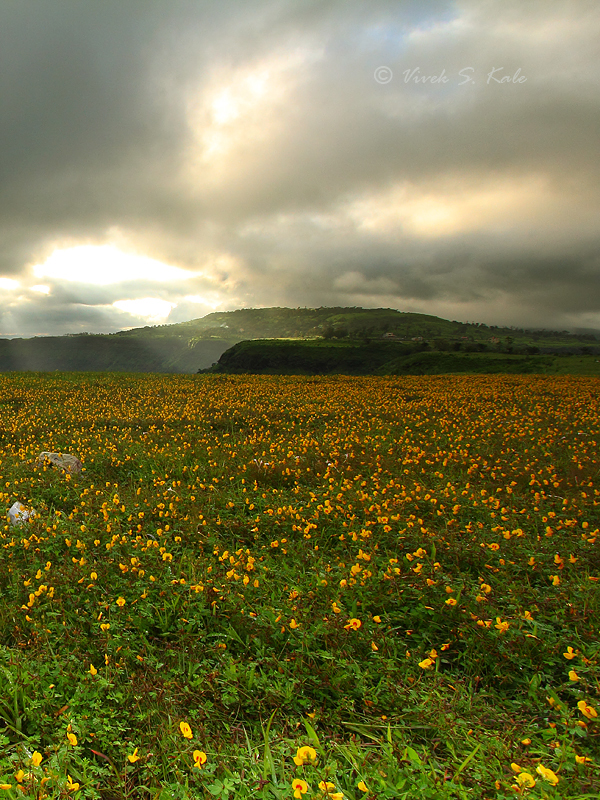
|
| |
| Man made Transformation/devastation, lateritic plateau, western ghats, Maharashtra, India |
| |
|
|
| |
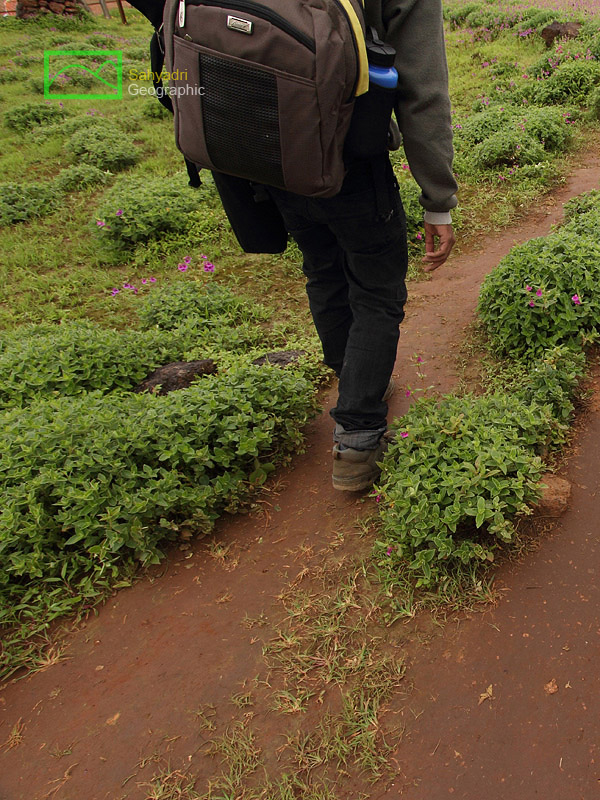 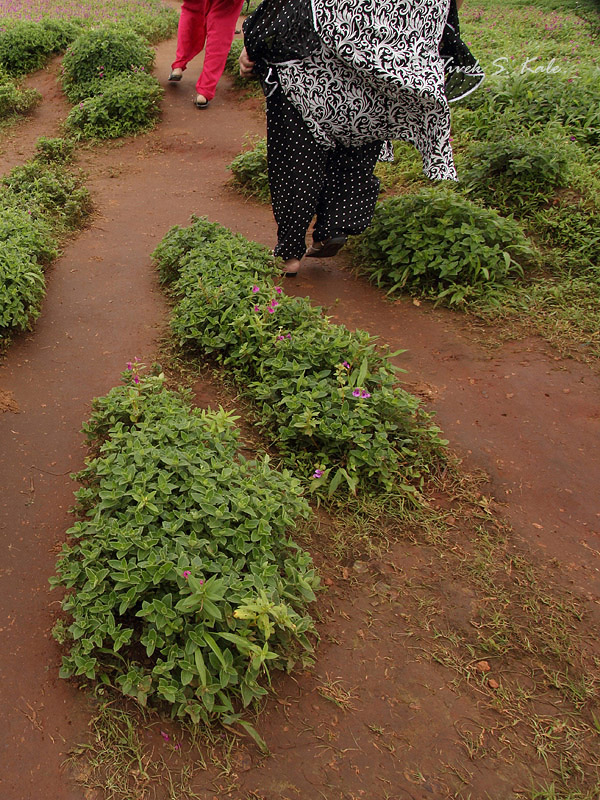
|
| |
| Man made Transformation/devastation, lateritic plateau, western ghats, Maharashtra, India
|
| |
|
|
| |
 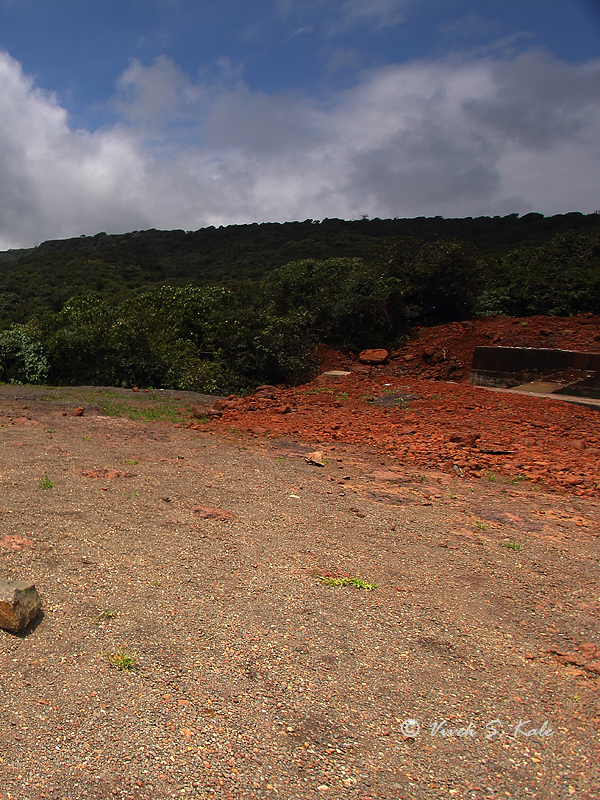
|
| |
| Man made Transformation/devastation, lateritic plateau, western ghats, Maharashtra, India
|
| |
|
|
| |
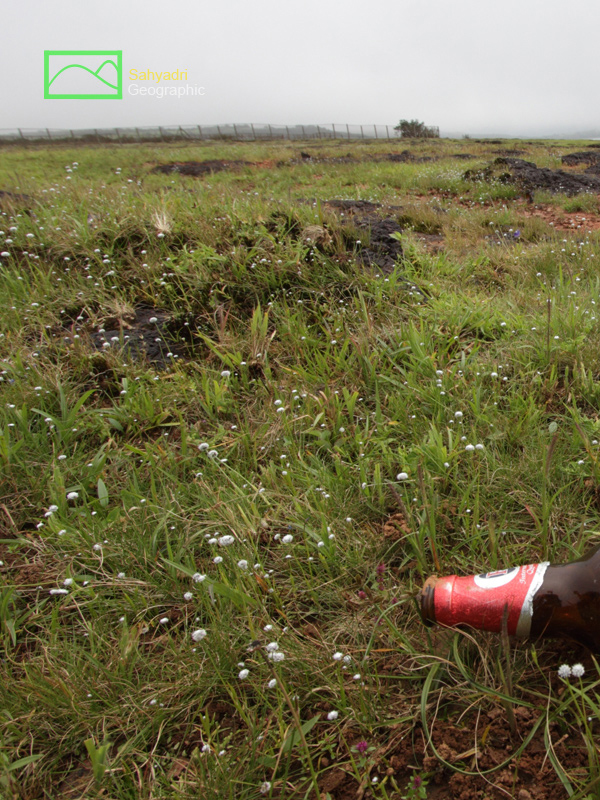 
|
| |
| Man made Transformation/devastation, lateritic plateau, western ghats, Maharashtra, India
|
| |
|
|
कास ला येणारे पर्यटक, मोठया संख्येने येतात. सुट्टिच्या दिवशी येथे प्रचंड गर्दी होते. हजारो चारचाकी वाहने येतात. वाहनतळ पठारापलिकडे असल्याने सर्व वाहने पठारावरुन पलिकडे येतात. पठारावर पार्किंग ला मनाई असली तरी सर्व वाहने पठारावरुन जातात. या सर्व वाहनांचे प्रदुषण येथील अधिवासासाठी धोक्याचे आहे. वाहनांमधुन होणाऱ्या प्रदुषणात त्यातुन उत्सर्जित धुर, कार्बन कण, तेल, इंधन व इतर द्रव्ये कारणीभुत आहेत. धुरातुन नायट्रोजन ऑक्साइड, कार्बन डाय ऑक्साइड,कार्बन मोनो ऑक्साइड, हायड्रोकार्बन्स, सल्फर, कार्बन बाहेर पडतात. हे बहुतेक वायु सर्वसामान्य माणसाला पारदर्शक असले तरी कास सारख्या नाजुक परिसंस्थेस अपायकारक आहेत. वाहनांच्या चाकांबरोबर व पर्यटकांच्या चपलाबुटांबरोबर बाहेरची माती येथे पोहोचते. यामातीत बाहेरच्या परिसंस्थेतले तणबीज असते. यामुळे गेल्या काही वर्षात पठारावर बाहेरचे तण व गवत उगवु लागले आहे. गवत येथील मुळ वनस्पतींची जागा घेत आहे.
|
|
The effect of People physically walking on the plateau or on the road is very high. The visitors visit the plateau in the automobile vehicles. The vehicles travel along the road on the plateau. This causes the direct pollution from automobiles. This includes the direct leakages from the vehicles such as fuel, oil, other liquids, as well as exhaust gas emissions. The exhaust gas pollutants include nitrogen oxide, hydrocarbons, methane, carbon monoxide, carbon dioxide, sulphur, carbon particles. As most of these pollutants are invisible to common eye, these are not realized by society. The shoes and vehicle tires bring the dust from faraway places along to the plateau. The dust is trouble maker as it brings the seeds of weeds which otherwise cannot reach the plateau with wind so fast. Please note that the wind direction and direction in which the visitors travel is opposite. The weeds or the plants which are categorized as invasive species have entered the plateau, some of which are capable of eliminating the native species. The grass has taken over the native herbs.
|
|
|
| |
 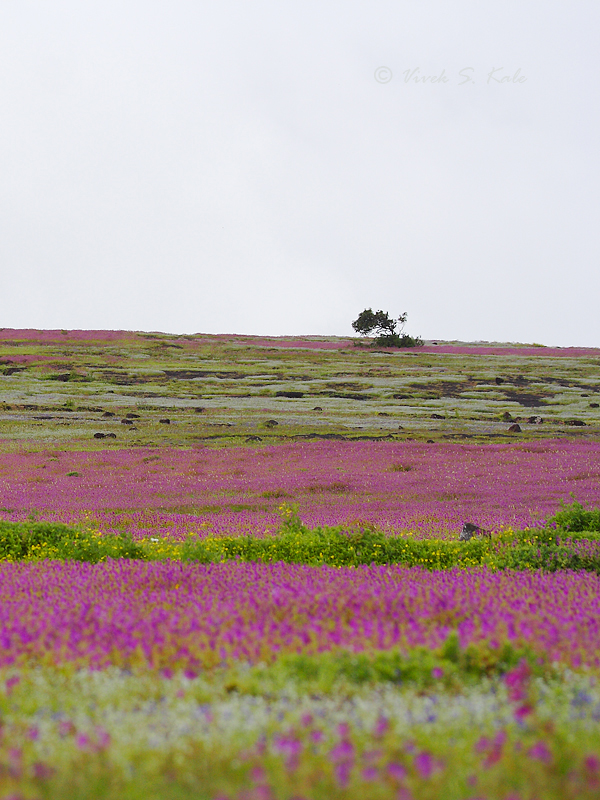
|
| |
| Kaas plateau way back in 2006, lateritic plateau, western ghats, Maharashtra, India
|
| |
|
|
| |
 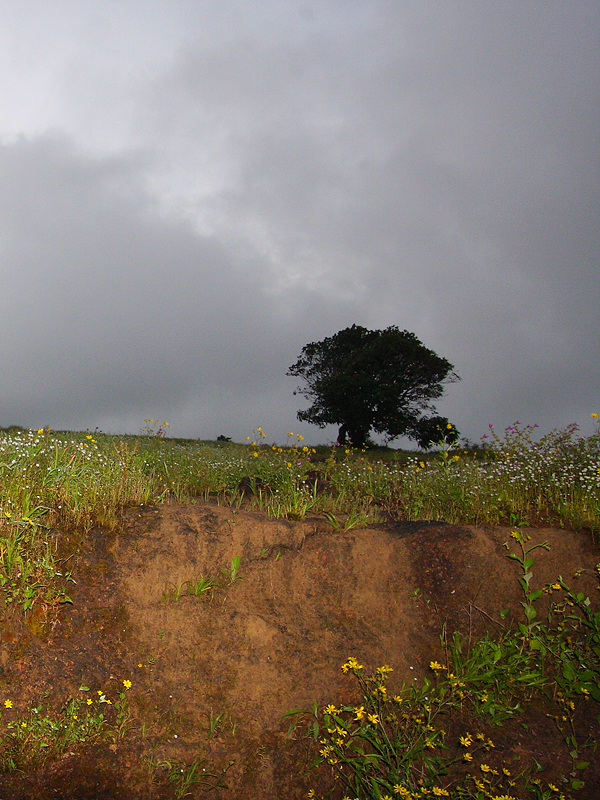
|
| |
| Fragile thin soil layer on plateau laterite, lateritic plateau, western ghats, Maharashtra, India
|
| |
|
|
| |
 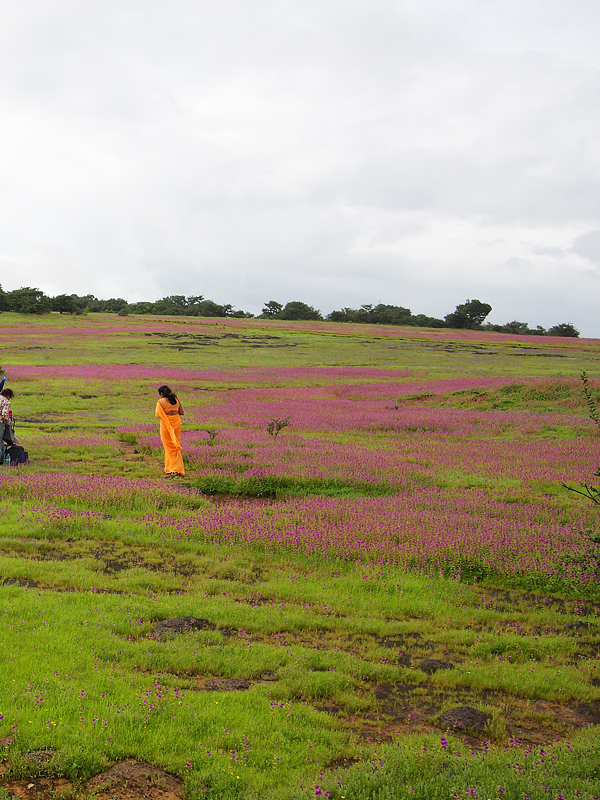
|
| |
| Man made Transformation/devastation, laterite plateau, western ghats, Maharashtra, India
|
| |
|
|
कास ला पुर्वी कमी पर्यटक येत. दरवर्षी येथे येणाऱ्या पर्यटकांची संख्या वाढते आहे. तीन वर्षांपुर्वी यावर तोडगा म्हणुन प्रशासनाने पठार व रस्ता यामध्ये कुंपण घातले. यामुळे पर्यटकांचा पदक्षेप काही प्रमाणात कमी झाला आहे. पुर्वी सहज तुडवल्या जाणाऱ्या वनस्पतींना यामुळे जीवदान मिळाले आहे. कुंपणामुळे मात्र येथील नैसर्गिक नजाऱा खराब झाला आहे. पर्यटक येथे प्लॅस्टिक, काचा, व इतर प्रकारचा कचरा करतात. यामुळे येथे सहाजिकच प्रदुषण होते. पर्यटनाव्यतिरिक्त पठाराला खुप धोके आहेत. शहरीकरण, खाणकाम, तस्करी, पवनचक्क्या हे धोके आहेत. जगभरातल्या सर्व देशांमध्ये शासन यंत्रणांचे लक्ष अर्थकारणावर व फक्त मनुष्याच्या प्रगतीकडे केंद्रित असताना, कास सारख्या अद्भुत पण लहान नाजुक निसर्गसंस्थेचे भवितव्य काय ? या प्रश्नाचे उत्तर फक्त येणारा काळ सांगेल.
|
|
The road which was small earlier has been now fences on either sides. The margins around the road were earlier full of native plants; The margins now are encroached by passing vehicles and visitors almost destroying the species along the margins and walkways. The fence has also affected the movement of fauna on the plateau. The fence has ruined the landscape in general, though it has worked well to control the mindset of people who earlier were freely intruding the natural habitat of fragile species. The tourism has brought with it the other issues such as pollution due to glass bottles, plastic bottles and wrappers, remains of food and other pollutants, etc. Every year large amount of solid waste is collected from the plateau and the region around.
|
|
|
| |
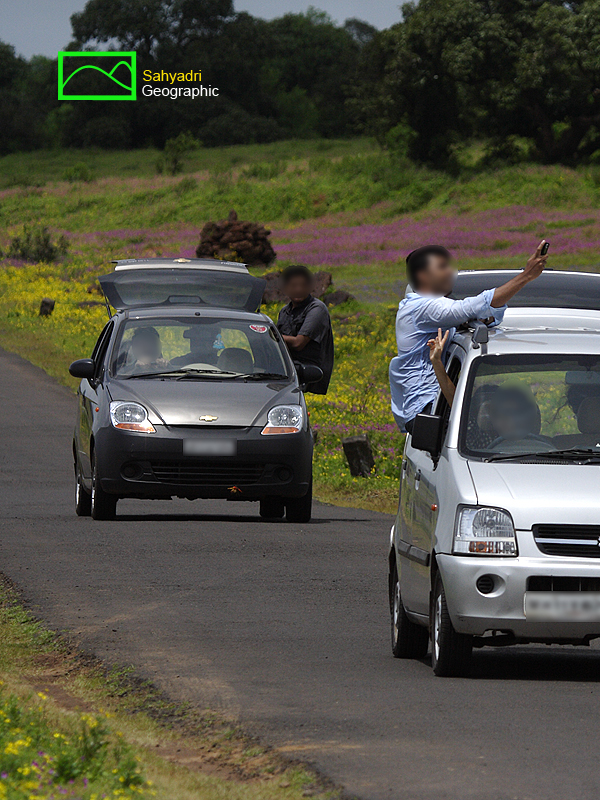 
|
| |
| Man made Transformation/devastation, lateritic plateau, western ghats, Maharashtra, India
|
| |
|
|
| |
 
|
| |
| Kaas plateau without fence 6 years back, laterite plateau, western ghats, Maharashtra, India
|
| |
|
|
चंडोल
भरारी --
हटले
पडदे
रंगमहाली,
रंग
भटकले
वरतीखाली
सीतेची
आसवे
जांभळी,
निळी
आभाळी
निळी
नभाळी
दमून
झोपली
पिवळी
कावळी,
रुसून
राहिली
कारवी
टोपली
तेरडी
बहरली
लाल
गुलाबी,
गर्दीत
या
दिपकडी
हरवली
हबे
अमरी
कुठे
पळाली,
बाकी
फुलांची
तर
गट्टी
जाहली
हटले
पडदे
रंगमहाली,
पर
चंडोल
पाखर
वेंधळुन
गेली
जिकडे
तिकडे
गर्दी
जाहली,
चंडोल
पाखर
वेंधळुन
गेली
घरटुली
माझी
कुणी
मोडीली,
उंच
भरारी
म्हणू
लागली
झरी
वाळली,
चहाच
झाली,
वेंधळली
ती गेंद
मंजिरी
हटले
पडदे
रंगमहाली,
नको अशी
हि करुण
कहाणी
घरटुली
माझी
कुणी
मोडीली,
उंच
भरारी
म्हणू
लागली
|
|
In early monsoon rock platue is covered with furious clouds, heavy rains and strong wind current. no one can venture there, not even the might eagles. As the rain recedes, in this theater of Nature, veils of mist are removed. The colors start dancing, on the floor and up in the sky. the purple flowers of utricularia (“sitechi asave”). the blue hairy flowers of “aabhaali” and “nabhaali” start blooming the yellow smithia, gets exhausted after dance in the morning and goes to siesta in the afternoon. The karvi flowers which bloom once in eight years are blushed and have not appeared this year the red balsam, purple balsam, pink balsam all of them all around, the white tall orchidlike depkadi montanum is surrounded by these pink beauty. the habe amri (ground orchid) which blooms in july august has vanished now in september and nonone knows where it has gone now. All this is fine but the bird pair of chandol (Malabar crested larks) are baffled and confused. As they do their sorties and dives in the sky they look worried and tense So many people all around. tourists, children, with their cars all around. As they fly, larks say “who has broken my nest” (these birds nest on the floor in the grass, on which anybody can step upon) the small streamlet has dried, somebody has opened a tea shop on the platue. tourists are happy, drinking the tea. The stream water is being consumed, the little tiny flowers of “gend “(white balls) and “manjiri” which rely on the stream water are also worried and tense. Let us change the story. this is not what we want. As the Malabar crested lark had its flight, it saw the glory on the velvet pink green, leaving its unattended nest on the ground, surrounded by tourists. Look at the image, you can feel like a lark, happy with flora glory but tense about the future. Please help the larks, and many tiny flowers by not stepping upon them and their nests.
|
|
|
| |
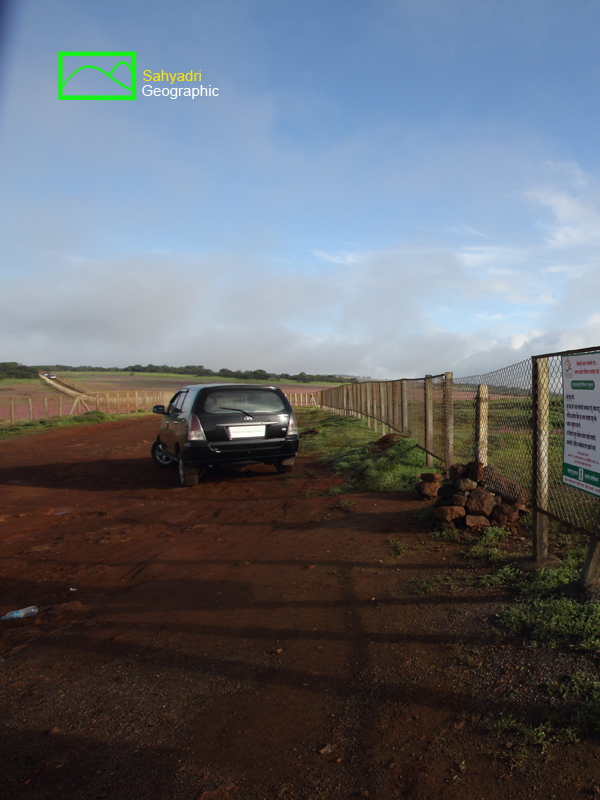 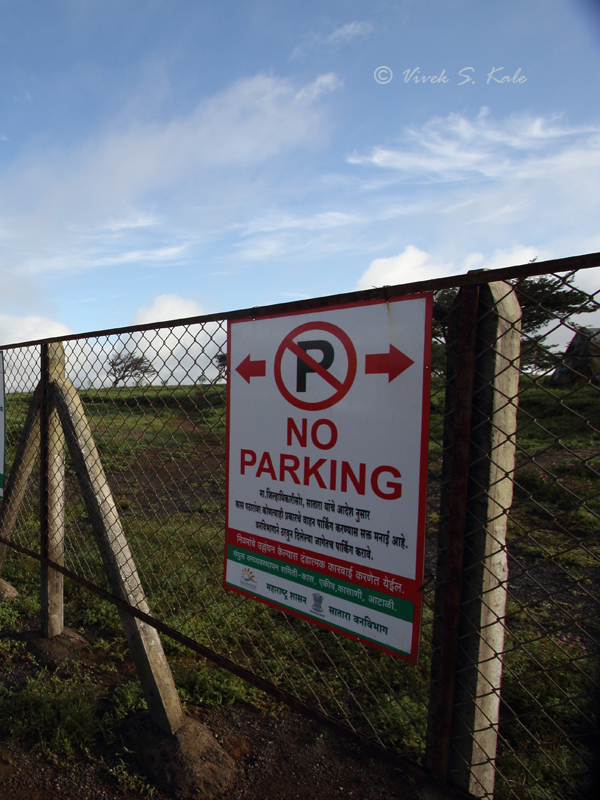
|
| |
| Man made Transformation, lateritic plateau, western ghats, Maharashtra, India
|
| |
|
|
| |
 
|
| |
| Man made Transformation/devastation, lateritic plateau, western ghats, Maharashtra, India
|
| |
|
|
| |
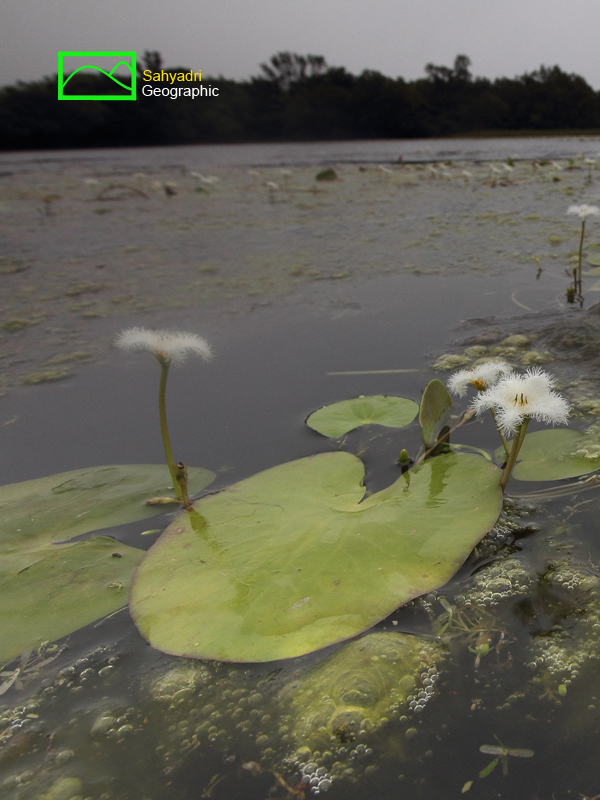 
|
| |
| Man made Transformation/devastation, lateritic plateau, western ghats, Maharashtra, India
|
| |
|
|
| |
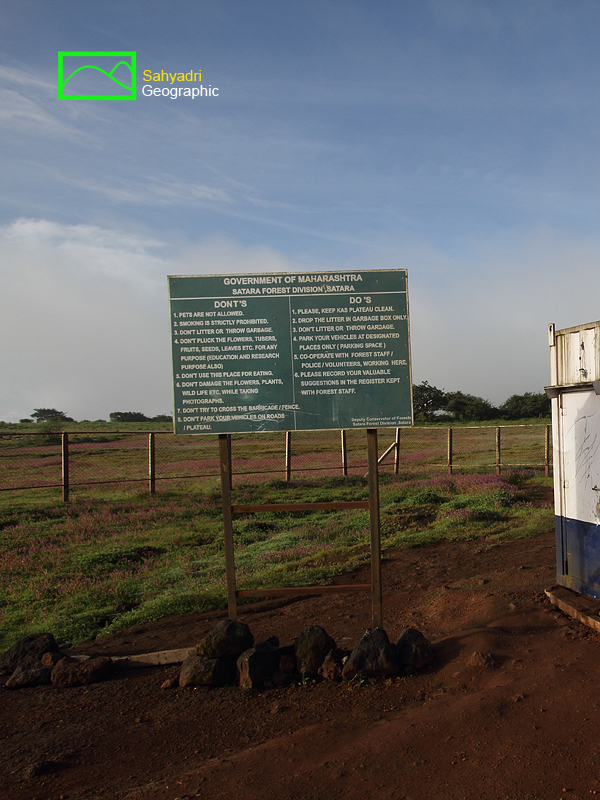 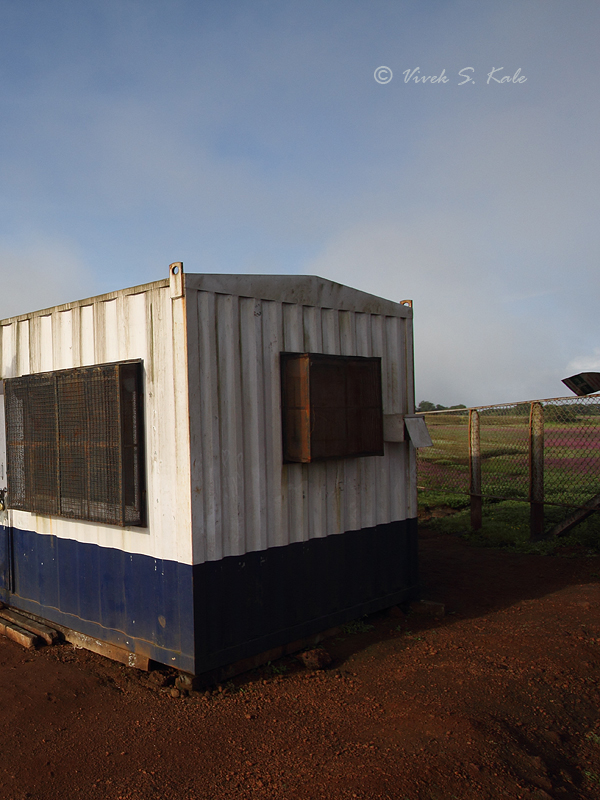
|
| |
| Man made Transformation/devastation, lateritic plateau, western ghats, Maharashtra, India
|
| |
|
|
| |
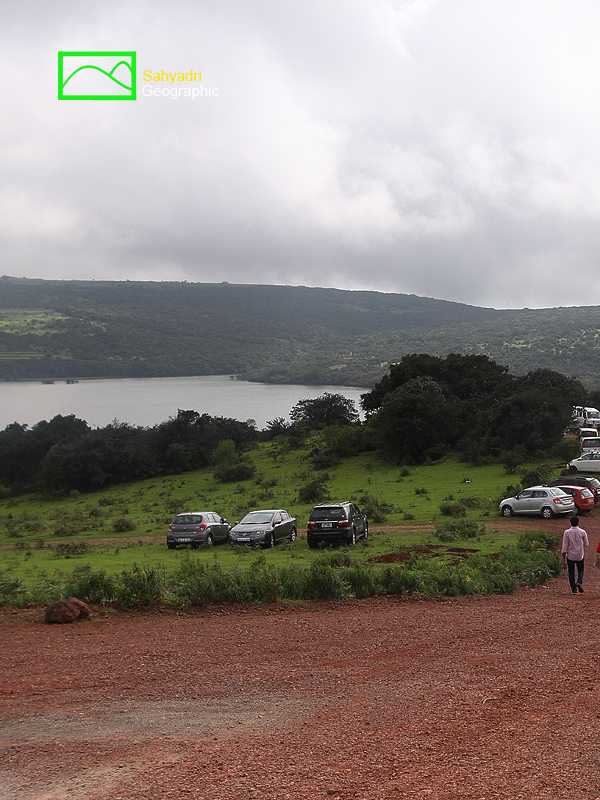 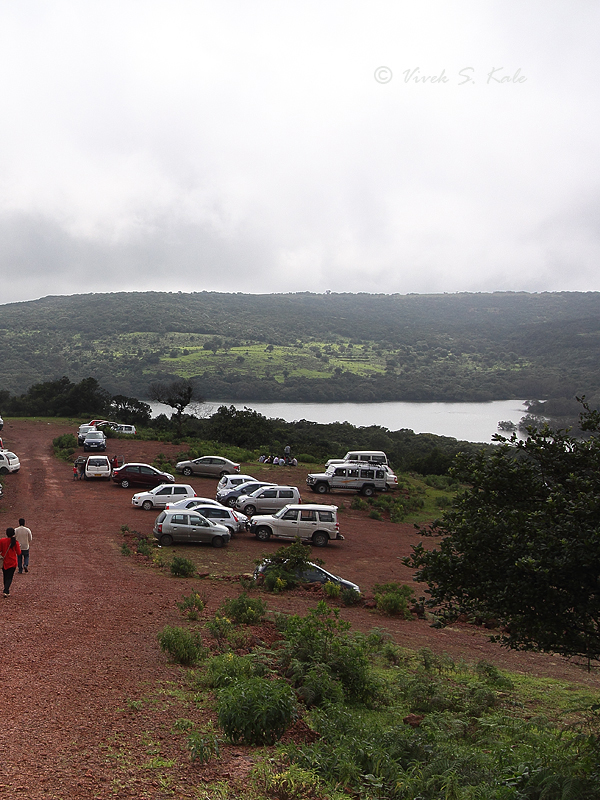
|
| |
| Man made Transformation/devastation, lateritic plateau, western ghats, Maharashtra, India
|
| |
|
|
| |
 
|
| |
| Man made Transformation/devastation, lateritic plateau, western ghats, Maharashtra, India
|
| |
|
|
| |
  |
| |
| Flora biodiversity, lateritic plateau, western ghats, Maharashtra, India
|
| |
|
|
सड़्यावर पावसाळ्याच्या शेवटी वैविध्य पुर्ण वनस्पती दिसतात. बऱ्याच वनस्पतींना फुले येतात. वातावरणातील बाष्प, पाण्याची पातळी, जमिनीतला मातीचा थर व सुर्यप्रकाशाची तीव्रता, अशा व इतर घटकांवर अवलंबुन असलेल्या वनस्पतींचे साम्राज्य सड़्यावर दिसते.
१) मोठे धोंडे,
२) उथळ झरे,
३) उथळ पाण्याची डबकी,
४) खोल पाण्याची रांजणकुंडे,
५) उथळ माती असलेली जमिन,
६) खोल माती असलेली जमिन,
७)उतार जमिन,
असे विविध लहान अधिवास येथे दिसतात. प्रत्येक अधिवासात वेगवेगळ्या वनस्पती दिसतात.
|
|
The lateritic plateaus have various sub-habitats. In these subhabitats various species bloom. A mosaic is seen on such plateau with various species of flowering plants. The typical examples of these subhabitats include,
a) Loose rocks/boulders (species such as Utricularia striatula, Cheilanthus farinose etc),
b) Shallow Streams (e.g.Eriocaulon dalzellii)
c) Shallow water puddles (e.g. Aponogeton satarensis, Eriocaulon tuberiferum etc)
d) Deep water holes (e.g. Nymphoides)
e) Deep Soiled depressions (Impatiens lawii etc)
f) Shallow soiled depressions (Smithia species., Habenaria species etc)
g) Rocky Slopes (Utricularia species)
h) Very Deep Soil.
A mosaic of these species is seen depending up on the local micro condition of the land.
|
|
|
| |
|
References :
1.Kaas Pushp pathar by Dr. Sandeep Shrotri (Book)
2.Flowers of Sahyadri by Dr. S. Ingalhalikar (Book)
2.Website of forest dept. of Maharashtra
Contact me at kale_v@rediffmail.com for any queries and suggestions.
|
|